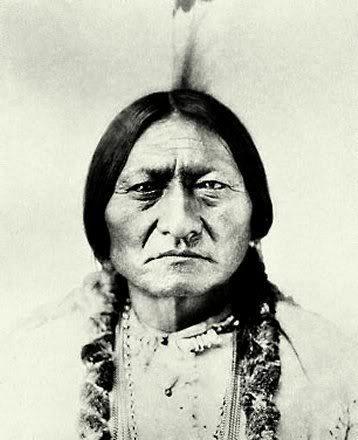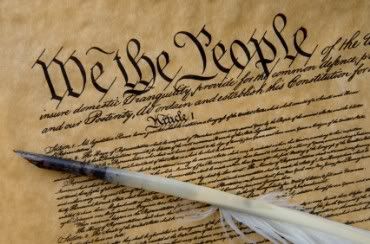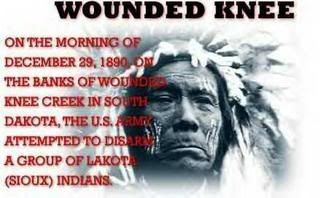I rarely write about sports because to me they are a fun distraction from more pressing matters, one ultimately of far less importance to the grand scheme of things. To be sure, I’ve always been aware of the base inequalities lurking underneath the surface, whether it be the pro players who make obscene amounts of money to play a game or the college kids who are treated as prized endowment cash cows for their individual universities, colleges, or conferences. Though I watch the games, once they have drawn to a conclusion, I turn off my television or internet feed and go on about the rest of my life. What has always troubled me the most is the extent to which some will pursue the minutia and exacting analysis of fandom, which if applied with even half the effort and half the obsession to a cause that would make strides to say, educate the illiterate or aim to reform a societal malady of choice, would produce impressive results.
Tag: history
Jan 03 2010
On Making It Work, Or, An Open Letter To Network TV
After a decade-long slide into semi-irrelevance, it’s now being announced that the major television broadcast networks are considering leaving behind the “free TV/advertiser supported” business model in order to turn themselves into something more closely resembling a cable operation; the idea being that they could create a second revenue stream from the same “subscriber fees” that are paid by cable and satellite operators to all the other channels those operators carry.
This has become necessary, according to the networks, partly because the market has become so fragmented…which, naturally, is cable’s fault-and presumably the fault of the disloyal viewer, as well.
Another reason driving the change is related to the desire of the networks to have a source of revenue that’s more reliable in times of economic downturn, when advertisers often try to husband scarce resources by cutting back on all their expenses, particularly advertising dollars.
Will this new change in the business model reverse the fortunes of the networks?
Is it possible that the networks are simply poor business managers?
And what about…Krystal Carey?
Tune in for the rest of the story-and we’ll find out.
Dec 31 2009
Liberalism Died in 1980 and was buried in 1988 so Let’s Move On
This is just a ramble — some reflections on the arguments going on within the progressive movement. I think we need to move on and think things out carefully rather than moving from news item to news item. What we see is a whole, a system. This system is very robust and we shouldn’t pretend it is not.
The Liberal age was from 1933 to 1980. The Reagan Era signaled a radical shift in U.S. politics. Reagan and his operatives were able to leverage the latent chauvinism, racism anti-intellectualism and class-hatred of the white working-class into a new (old) vision of America and American Exceptionalism. To be called a “liberal” was nearly as bad as being called a homosexual. Liberals were seen as people who deliberately set out to destroy families and all traditional values and thus were existential threats. This was hard for most liberals to understand since they, in the best American tradition, just wanted to make sure we lived in a decent society were people were treated fairly and civilized behavior was encouraged. Interestingly liberals also favored traditional Christian virtues like charity, gentleness towards the sick, poor, disabled, as well as people in classes that were traditionally excluded from mainstream America like African-americans, Native peoples, women and so on. Liberals tended not to get this visceral hatred and what was behind it and what was the ultimate goal of the neo-Conservative movement (it was not a Conservative movement at all but a radical neo-fascist movement).
Dec 29 2009
Reform is a Gift to Others Beyond Ourselves
With President Obama being a major disappointment in some corners, it was perhaps inevitable that Hillary Clinton loyalists would exercise their right to second-guess the inevitable nominee. Anne Kornblut’s column in The Washington Post entitled, “When young women don’t vote for women” is but the latest effort to chastise young feminists and young women in general for not being more supportive of the first female candidate to make a serious run for the White House. The column, regrettably, also invokes the counter-productive liberal guilt complex construct of the Oppression Olympics to make its point, which is something I thought we had recognized does nothing to unite and everything to divide. Pitting women against African-Americans in some kind of twisted priority system has been the demise of many worthy organizations and the beginning of arguments that inevitably lead to raised blood pressure.
Dec 21 2009
A Pagan Christmas to All!
(thanks for the kind words over at the GOS, TheMomCat!)
Among the mouth-breathingest of mouth-breathing Republicans, it’s a well-known fact that every November or so, we libruls gather in our covens and plot the paganization of Christmas. In their Left Behind-style fantasies, we are the legions of Satan, come upon the Earth to foist secular ideas and Godless traditions upon the flock of the Lamb. Only the Bible stands in defense of the faithful against the pernicious attacks of the heathen First Amendment, as we the befouled seek to eradicate every trace of monotheism from our once-God-fearing civilization. Each year, the scarred veterans of the (self-)Right(eous) stir their zealots to action, and in public squares and mangers throughout the land, battles over the soul of American culture are waged.
As in all wars, sometimes an enemy’s gallantry on the field of battle impresses even a bitter foe – Napoleon, remarking on the Russian cavalry then crashing into his lines, said “Now these are Kossacks!”. Rather like the Confederates at Pickett’s Charge, they may be trying to storm a solid position in the name of a dubious set of causes, but we have to respect the temerity it takes to throw oneself into the breach for an issue one really doesn’t understand.
Dec 20 2009
The Wounded Knee Massacre: 119th Anniversary
The Sand Creek Massacre and the Washita Massacre both led to the Wounded Knee Massacre. The Sand Creek Massacre brought the realization that “the soldiers were destroying everything Cheyenne – the land, the buffalo, and the people themselves,” and the Washita Massacre added even more genocidal evidence to those facts. The Sand Creek Massacre caused the Cheyenne to put away their old grievances with the Sioux and join them in defending their lives against the U.S. extermination policy. The Washita Massacre did that even more so. After putting the Wounded Knee Massacre briefly into historical perspective, we’ll focus solely on the Wounded Knee Massacre itself for the 119th Anniversary of the Wounded Knee Massacre.
Dec 19 2009
Sitting Bull Was Right (HBO’s Bury My Heart At Wounded Knee)

http://digilander.libero.it/Bo…
Historical revisionists of American Indian history portray indigenous people being as violent as white Europeans were before they arrived on this continent and after settlement. Consequently, HBO’s “Bury My Heart at Wounded Knee” was no exception in the scene with Sitting Bull and Col Nelson Miles on the Buffalo Robe, as Miles justified the genocide he was committing as “You were as violent as we are, we’re doing the same thing to you that you did to them (paraphrasing).”
Dec 18 2009
California Valley Miwok Tribe, “WE NEED YOUR HELP!!!” (Petition)
Justice for the California Valley Miwok Tribe (Petition)The entire tribe, elders and children included, is going to be removed by force from their land with no place to go. They are forced to barricade themselves in the tribal office. Using filing cabinets and anything else they can use to secure the building in hopes to protect their culture, their people, and basically everything they have.
We ask that Miwok tribe be allowed to stay in the land they have lived on for 7 years and be given the chance to dialogue with the appropriate legislatures and/or officials about the matter.
Dec 14 2009
On The Futility Of War, Part Two, Or, Twelve Times The Charm?
We are halfway through a story that is about to turn winter in one of the most beautiful places in the world profoundly ugly.
Just like in a Cecil B. DeMille movie, we have a cast of millions, we have epic scenery, and we have made acquaintance with someone who will go on to perform a heroic act.
Unlike your typical Hollywood production, however, this movie is not going to have a happy ending-in fact, you could make the argument that it’s not over yet.
So wrap yourself up in something comfortable, grab something to drink…and when you’re ready, we’re packing up and heading to the Alps.
Dec 13 2009
On The Futility Of War, Part One, Or, Snow Becomes A Lethal Weapon
We have another one of those “amazing history” stories for you today-and this one’s a real doozy.
We’re going to spend the better part of four years in the Italian Alps (or, to be more accurate, what was intended to be the Italian Alps), and by the time we’re done, nearly 400,000 soldiers will have been killed-and 60,000 of those will have died as a result of avalanches that were set by one side or the other.
In the middle of the story: a mountaineer and soldier who was so highly regarded that even those who fought against him accorded him the highest honors they could muster, creating a legend that lives on to this very day.
And even though a young Captain Erwin Rommel fought in these battles…it’s not him.
Oh, by the way: did I mention that there are also some handy object lessons for anyone who might be thinking about fighting a war in Afghanistan?
Well, there are, Gentle Reader, so follow along, and let’s all learn something today.
Dec 13 2009
The Economic Bill of Rights — and the long March of History

Franklin D. Roosevelt’s “The Economic Bill of Rights”
In our day these economic truths have become accepted as self-evident. We have accepted, so to speak, a second Bill of Rights under which a new basis of security and prosperity can be established for all-regardless of station, race, or creed.
Among these are:
Dec 11 2009
Recognizing Genocide Denial Against American Indians
The extent to which a Nation denies the genocide it has committed is a measure of that Nation’s social conscience. The social conscience of the United States is infected with numerous rationalizations that keep the dark light from shining. Federal and state institutions are named after mass murderers, and the land tells a story of massacres and atrocities that occurred. But the truth is not forgotten, it is denied.
8. DENIAL is the eighth stage that always follows a genocide. It is among the surest indicators of further genocidal massacres. The perpetrators of genocide dig up the mass graves, burn the bodies, try to cover up the evidence and intimidate the witnesses. They deny that they committed any crimes, and often blame what happened on the victims. They block investigations of the crimes, and continue to govern until driven from power by force, when they flee into exile.
Genocide is not just denied in the United States, it is celebrated.
The term “redskins” actually refers to the Indian skins and body parts that bounty hunters had to show in order to receive payment for killing Indians, the National Congress of American Indians argued in a brief filed before the high court.
What we shall see, is that denying the genocide of the American Indian is for ideological or economic reasons. What we need to know, is how specifically people deny the genocide of the American Indian.

